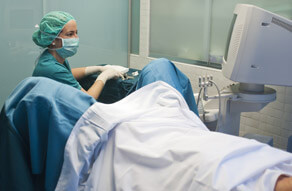Often, women who do not succeed in becoming pregnant, a gynecologist appoints a so-called hysterosalpingography (GHA). Do not be alarmed by such a long and unpronounceable name. This is just one of the types of studies necessary in order to objectively assess the patency of the fallopian tubes. Indeed, the answer to the Hamlet question: «To be or not to be pregnant?», Depends on their condition in many ways, since the «meeting place» of the sperm and the egg is exactly here. Tube obstruction can be triggered by adhesions, polyps, scars, etc. causes that arose as a result of acute and chronic infections of the genital area.
Indications for GHA
Indications Indications for the appointment of GHA are infertility, malformations of the uterus, endometriosis, polyposis. The functionality of the fallopian tubes is evaluated by criteria such as:
a) mechanical patency;
b) the condition of the mucous membrane.
GHA is carried out either using an ultrasound-machine, or - X-ray equipment. The GHA procedure itself is as follows. The patient lies in a chair and the doctor injects a special contrast agent (while X-ray equipment) or saline (while ultrasound machine) through a catheter into the uterine cavity with a syringe. Next, conduct a series of x-rays, or ultrasound.
Contraindications to GHA are:
- inflammatory gynecological diseases;
- acute infectious diseases;
- cysts;
- tumors;
- tuberculosis;
- allergic reactions to iodine.
GHA is a practically harmless and painless research method. However, before proceeding to hysterosalpingography, it is necessary to conduct tests for the presence of genital infections , in order to exclude the risk of ascending infection.
According to the experts of the Bogoliuby Center for Reproductive Medicine, the efficiency of patients who underwent hysterosalpingography is restored the very next day.

















